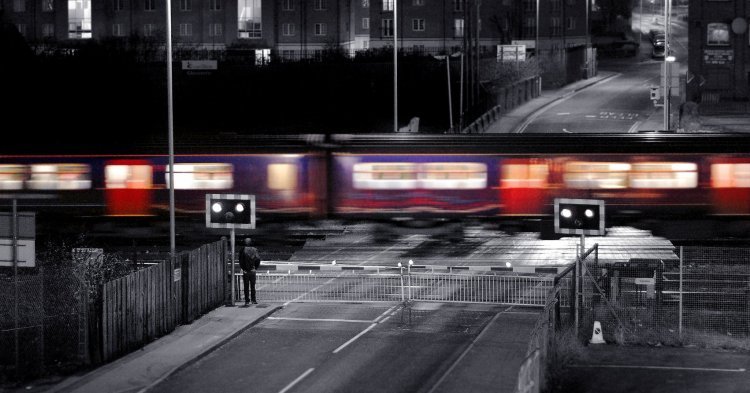Mind the gap: between perceptions and reality
Despite their prominence in our storybooks, cinemas and imaginations, night trains have suffered badly from the growth of budget flights and even from the development of high-speed rail networks. Many operators, including Germany’s Deutsche Bahn and Italy’s Trenitalia, have overall been phasing them out over the past decade. Yet expanding night train options is imperative for the development of greener travel options that we urgently need to allow Europeans to travel in an age of climate emergency.
Certainly, high-speed rail networks offer fast and fabulously smooth journeys – but they are often national-centred projects ill-adapted to cross-border journeys which so many Europeans associate with their summers and indeed need to complete for professional reasons. Yes, the TGV between Paris and Strasbourg can hit 320 km/h. But after Strasbourg, passengers face any number of changes and short, choppy journeys to keep travelling eastwards. It’s a similar story for southern-bound passengers – heading to Marseille from Paris is fast, and after that, to get to Italy or Spain, it’s complex and therefore slow.
Furthermore, as is amply demonstrated by the aggressively controversial high-speed rail project HS2 in the UK, the construction of fresh tracks suited for great speeds can be an environmental disaster and a financial sponge, the costs of which are frequently passed on to consumers. The TGV might be good, but for many, it’s extortionate. HS2 has already soaked up €5bn from the public purse without even being built.
Budget airlines offer us cheap speed but no future. Faced with a climate emergency, the need to urgently and drastically reduce our carbon emissions (to which international aviation contributes a fiftieth of all CO2 output) cannot be shelved for too much longer. Additionally, the convenience of cheap flights is somewhat inflated – some companies successfully keep costs down by offering very early or very late flights or from bizarre far-flung airports (mentioning no names, Ryanair), making getting to and from the airport so difficult that a night on the floor avoiding the cleaners’ mops is on the cards for those who can’t afford a hotel.
Enter the night train. Use of existing local infrastructure possible, thus avoiding environmental and financial burdens; relatively low emissions; city centre to city centre journeys (I may still be bitter about the flight from Frankfurt Hahn that I mistakenly assumed would be taking off from somewhere near Frankfurt); convenient evening departure and morning arrival. In short, night trains constitute a genuine alternative to flying for intra-European travel, because they allow us to travel across national borders and infrastructures and beat the distances with sleep instead of speed. With investment, a bold vision and targeted strategy, European night trains can be brought back on track.
European Transport Policy + European Green Deal = ?
European transport policy is lukewarm and fundamentally flawed. Largely a member state competence throughout the first three decades of European integration, the 1980s saw a push towards the creation of a Trans-European Transport Network (TEN-T) and a single market for transport based on the principle of open competition. Yet just as the market has no solution for integrating the patchwork of national rail operators with their different modi operandi, it has no solution for “greening” transport. Within the EU, the transport sector contributes around a quarter of all greenhouse gases generated by human activity, putting it on the front line of what we need to adapt in the age of the Green Deal with policy, not market forces. We need the EU to be much more active and innovative in shaping transport for the future.
A Roadmap for Night-time Rail
Step one is to reverse financial incentives in transport. While rail operators face track access charges when they cross borders as well as other taxes including VAT, airlines do not. Taking account of our need to improve cross-border mobility by rail while reducing emissions, this is simply absurd. Impose a tax on airlines (in a letter to the European Commissioner for Climate Action Franz Timmermans, nine EU countries have already expressed strong support for this) and put the revenue into rail.
Step two is to reduce other barriers which, despite a push towards a Single European Railway Area, still hamper the flow of trains across borders. These include non-uniform railway track gauges, differing types of electrification, incompatible signalling systems and different platform heights. The EU should dedicate more effort into reducing these gaps or developing innovate ways to bridge them.
Step three is investigate demand and develop a bold vision for a network of night trains based on both existing demand and the future needs of Europeans. Of all air travel involving the EU-28 in 2018, 62% of flights were within the EU’s borders. While Helsinki to the Canary Islands might be a tough route to replace, country pairs accounting for a high proportion of air traffic like France and Spain or Italy and Germany should be ripe for replacement by rail and these popular routes could be the first targets for this strategy.
Let’s take Munich to Rome: the 1000km by road and 9 hours by train make for a long, tiresome day, making a one hour flight look pretty appealing. But picture 9 hours on a decently comfortable night train – board at 9pm in Munich, get some sort of night’s sleep 10pm – 6am, debark in the Italian capital at 7am. Yes, it takes longer than flying, but if such convenient, time-efficient alternatives were available, people would be willing to watch their emissions more than the clock.
Step four is invest strategically. Recent bailouts of Lufthansa and Brussels Airlines involve eye-watering figures show that, when states have enough incentive, they can find the funds to keep national champions afloat. But we should be looking future needs, not current ones, when targeting our investment. We should consider creating a European rail operator in the form of a joint venture between as many member states as possible, supported partly by the EU budget and also by private stakeholders, which could eventually become a “European champion” specialising in night-time travel.
Night trains are unlikely to be profitable for a long time without hefty state support, but, with some strategic prodding in the right direction from the EU and member states, they could quickly compete with airlines over medium and even long distances and vastly reduce European emissions, all whilst providing far more convenience and comfort than budget coach travel.
Just the Ticket
Lots of us will have read about the interesting proposition which came from the think tank Vienna Institute, suggesting a high-speed European rail network be part of the covid recovery fund. This would already be a step forward from the ragged patchwork of national high-speed railway lines which lose their coherence as soon as they cross a border. However, it is no substitute for a vision for a rich variety of night-time train travel options, allowing Europeans to cover long distances with minimum inconvenience within the near future using existing infrastructure.
In short, night trains are just the ticket for making European rail travel truly European. The biggest danger is being offered a packaged, mass-produced pastry ambitiously labelled as “breakfast”. But it seems to me a small price to pay.


Follow the comments: |
|
